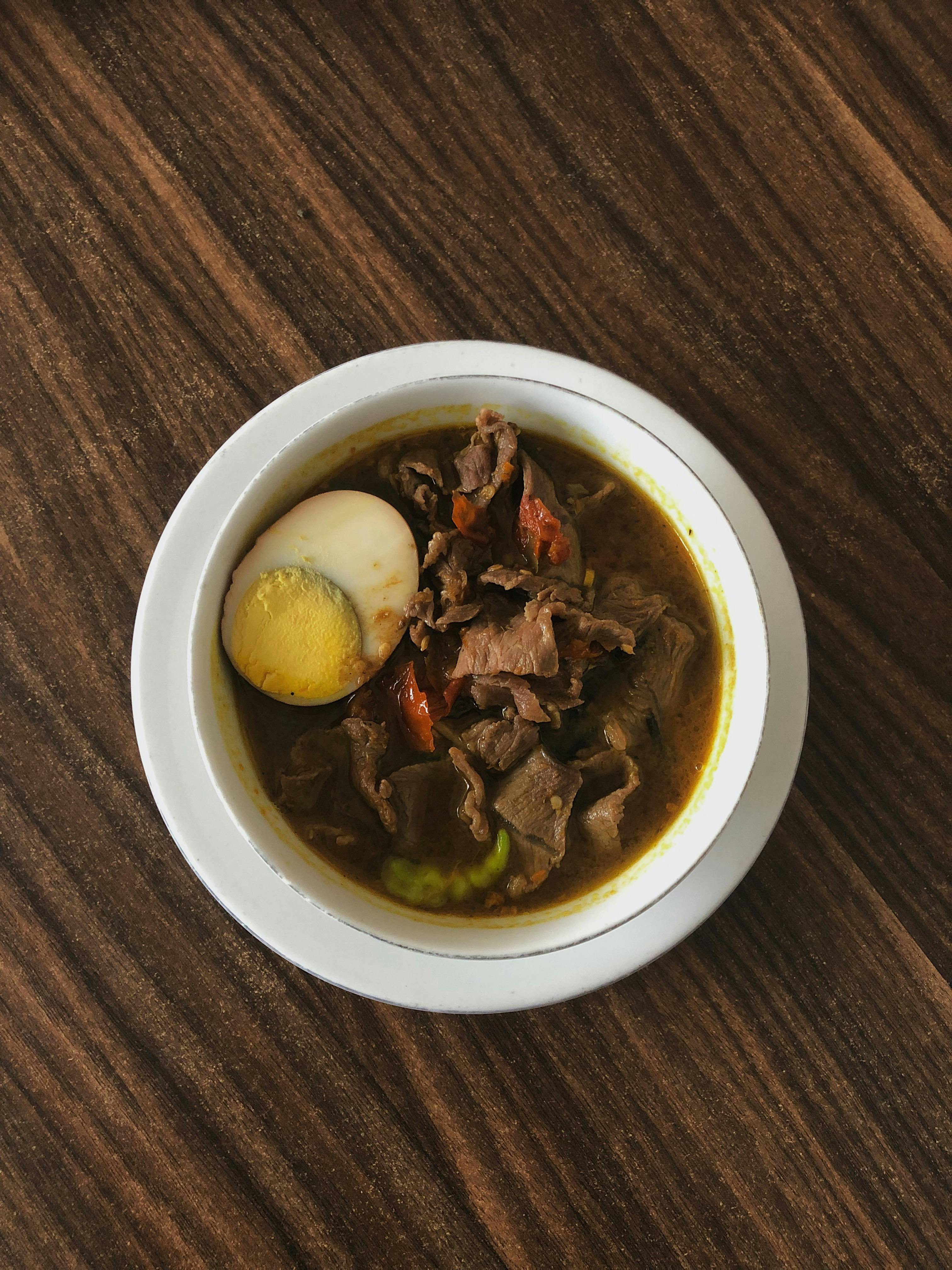Health
The Beginner’s Guide to Elimination Diets
Discover the ins and outs of elimination diets with this comprehensive beginner’s guide. Learn how to identify trigger foods, manage symptoms, and improve your overall health. Are you ready to embark on a transformative journey towards better well-being?
Whether you’re trying to pinpoint food sensitivities or seeking to improve your overall health, embarking on an elimination diet can be a game-changer. This comprehensive guide will walk you through the ins and outs of elimination diets, providing valuable tips and insights to help you successfully navigate this transformative journey. From understanding the foundations of elimination diets to discovering common culprits and deciphering potential symptoms, you’ll gain a deeper understanding of how this approach can bring about positive changes in your well-being. So, get ready to embark on a path towards better health and discover the power of elimination diets.

This image is property of images.pexels.com.
What is an Elimination Diet?
Definition
An elimination diet is a short-term eating plan that involves removing certain foods or food groups from your diet to help identify any food intolerances or sensitivities. It is a systematic approach taken to determine which specific foods may be causing unwanted symptoms or triggering underlying health issues. By temporarily eliminating these foods, you can observe how your body responds when they are reintroduced.
Purpose
The primary purpose of an elimination diet is to identify foods that may be causing adverse reactions in your body. These reactions can range from mild discomforts, such as bloating and headaches, to more severe symptoms like digestive issues, skin problems, or even autoimmune disorders. By eliminating potential trigger foods, you can pinpoint and understand the root causes behind these symptoms, leading to more targeted dietary changes and improved overall well-being.
How it Works
The concept behind an elimination diet is straightforward. By removing specific foods from your diet for a set period, usually around 2-6 weeks, you allow your body to heal from any potential inflammation or irritation caused by these foods. During this elimination phase, you carefully monitor and record any changes in your symptoms or overall health. After this initial phase, you systematically reintroduce the eliminated foods one at a time, observing any reactions that may occur. This process helps you identify which specific foods are causing adverse effects and allows you to develop a long-term diet plan that caters to your individual needs.
Reasons to Try an Elimination Diet
Identify Food Intolerances
One of the key reasons to try an elimination diet is to identify and manage food intolerances. Food intolerances occur when your body has difficulty digesting or processing certain foods, leading to a range of uncomfortable or even debilitating symptoms. An elimination diet helps you pinpoint these trigger foods by temporarily removing them from your diet and monitoring for any improvements in your symptoms. Once identified, you can make informed decisions about which foods to avoid in order to minimize discomfort and improve your overall well-being.
Manage Digestive Issues
Another common reason to try an elimination diet is to manage digestive issues such as bloating, gas, diarrhea, or constipation. These symptoms can be caused by various factors, including food intolerances, gut imbalances, or underlying conditions such as irritable bowel syndrome (IBS). By carefully eliminating potential trigger foods and gradually reintroducing them, you can determine which specific foods are contributing to your digestive discomfort. This knowledge can empower you to make mindful dietary choices and create a personalized diet that supports healthy digestion.
Reduce Inflammation
Inflammation is a natural response of your immune system to injury or infection. However, chronic inflammation can lead to a wide range of health issues, including cardiovascular diseases, autoimmune disorders, and even certain types of cancer. An elimination diet can help reduce inflammation by eliminating foods that may be triggering an inflammatory response in your body. By identifying and avoiding these trigger foods, you can lower inflammation levels, potentially alleviating symptoms and improving your overall health.
Find the Root Cause of Symptoms
Persistent symptoms, such as fatigue, joint pain, or skin problems, can be frustrating and challenging to diagnose. An elimination diet can serve as a valuable tool in identifying the root cause of these symptoms. By eliminating potential trigger foods and reintroducing them one by one, you can identify the specific foods that may be responsible for your symptoms. This knowledge is instrumental in understanding your body’s unique needs and developing a long-term diet plan that promotes optimal health.
Steps to Follow for an Elimination Diet
Consult with a Healthcare Professional
Before embarking on an elimination diet, it is important to consult with a healthcare professional, such as a registered dietitian or a doctor specializing in nutrition. They can provide guidance, tailor the elimination diet to your specific needs, and ensure that you are not putting yourself at risk for nutrient deficiencies or other health issues. They can also help you rule out any underlying medical conditions that may require additional treatment.
Keep a Food Journal
Keeping a detailed food journal is an essential step in an elimination diet. It allows you to track everything you eat and drink, as well as any symptoms or changes you experience. By recording your dietary intake and symptoms, you can identify patterns and potential trigger foods more easily. Be sure to note the date, time, and quantity of each food item consumed, as well as any symptoms that arise within a few hours or up to 48 hours after consumption.
Identify Potential Trigger Foods
Based on your symptoms, medical history, and the guidance of your healthcare professional, you will determine which foods or food groups to eliminate during the elimination phase of the diet. Common trigger foods include gluten, dairy, soy, eggs, nuts, shellfish, food additives, and highly processed foods. However, the specific foods to eliminate may vary depending on your individual needs and suspected intolerances. It is essential to focus on eliminating the foods that are most likely to be causing your symptoms.
Create an Elimination Plan
Once you have identified the foods to eliminate, it is important to create a structured plan to follow during the elimination phase. This plan should outline which foods to avoid, suggest alternative foods to incorporate, and provide guidelines for meal planning and preparation. Having a clear plan in place will make the process more manageable and increase your chances of successfully identifying trigger foods.
Follow the Elimination Phase
During the elimination phase, you will strictly adhere to the plan you have created, avoiding all the identified trigger foods. It is crucial to read food labels carefully, as many processed products may contain hidden sources of your trigger foods. Instead, focus on consuming whole, unprocessed foods, and prepare meals from scratch whenever possible. Remember to continue tracking your food intake and any changes in symptoms during this phase.
Reintroduce Foods Methodically
After the elimination phase, it is time to reintroduce the eliminated foods one at a time, in a methodical manner. Start with small amounts of the food and carefully monitor your body’s response over the next 48-72 hours. If no adverse reactions occur, you can consider the food successfully reintroduced. If you notice any symptoms or discomfort, it is advisable to eliminate that specific food and consult with your healthcare professional for further guidance.
Observe and Evaluate Symptoms
Throughout the reintroduction phase, it is important to pay close attention to any changes or symptoms that arise. Keep track of how your body reacts to each reintroduced food and note any specific patterns or triggers you identify. This information will help you create a personalized long-term diet that promotes optimal health and prevents the recurrence of symptoms.
Develop a Long-Term Diet
Once you have completed the elimination and reintroduction phases, you can work with your healthcare professional to develop a long-term diet plan that suits your individual needs. This plan will incorporate the foods that do not trigger any adverse reactions and exclude those that cause discomfort or symptoms. It is essential to adopt a sustainable and balanced approach to ensure you are meeting your nutritional needs and maintaining a healthy relationship with food.
Common Trigger Foods to Eliminate
Gluten
Gluten is a protein found in wheat, barley, rye, and some other grains. It is a common trigger for individuals with celiac disease, gluten sensitivity, or wheat allergies. Eliminating gluten-containing foods can help relieve symptoms such as abdominal pain, bloating, diarrhea, and fatigue.
Dairy
Dairy products such as milk, cheese, and yogurt contain lactose, a sugar that many people have difficulty digesting. Removing dairy from your diet can be beneficial if you experience symptoms such as bloating, gas, diarrhea, or skin issues. It can also be helpful for individuals with lactose intolerance or milk protein allergies.
Soy
Soy is a legume that is commonly used as an ingredient in various processed foods. Some individuals may be sensitive to soy, experiencing symptoms such as digestive issues, skin rashes, or hormonal imbalances. Eliminating soy from your diet can help determine if it is a trigger for any adverse reactions.
Eggs
Eggs are a common allergen that can cause symptoms such as hives, nausea, or digestive problems in susceptible individuals. Eliminating eggs from your diet can help identify if they are the cause of any undue discomfort or allergic reactions.
Nuts
Nuts, including peanuts and tree nuts, are known allergens that can trigger severe allergic reactions in some individuals. Removing nuts from your diet can help determine if they are responsible for any symptoms such as itching, swelling, or difficulty breathing.
Shellfish
Shellfish such as shrimp, crab, and lobster can cause allergic reactions in certain individuals. Symptoms can range from mild to severe, including hives, vomiting, or potentially life-threatening anaphylaxis. Eliminating shellfish is crucial for identifying any allergic reactions.
Food Additives
Food additives, such as artificial colors, flavors, and preservatives, can trigger adverse reactions in some people. These reactions can include headaches, digestive issues, or allergic-type symptoms. By eliminating processed foods that contain these additives, you can identify if they are contributing to your symptoms.
Highly processed foods
Highly processed foods, often containing artificial ingredients, trans fats, and an excessive amount of added sugars, can be difficult for many people to digest. By eliminating these foods and focusing on whole, unprocessed foods, you can improve your overall health and identify if the level of processing is a trigger for any adverse reactions.

This image is property of images.pexels.com.
Alternative Foods to Incorporate
Non-gluten grains
If you need to eliminate gluten, there are plenty of alternative grains that can be incorporated into your diet. Examples include rice, quinoa, buckwheat, amaranth, and millet. These grains are naturally gluten-free and can provide a satisfying carbohydrate source.
Plant-based milk
If you are eliminating dairy, there are various plant-based milk alternatives available, such as almond milk, oat milk, coconut milk, or soy milk. These options can be used in place of cow’s milk in recipes, beverages, and cereals.
Legumes
Legumes, including beans, lentils, and chickpeas, are excellent sources of plant-based protein and fiber. They can be an essential part of a well-rounded elimination diet, providing a nutrient-dense alternative to animal proteins.
Seeds
Seeds, such as chia seeds, flaxseeds, hemp seeds, and pumpkin seeds, are rich in healthy fats, fiber, and essential nutrients. They can be sprinkled over salads, added to smoothies, or used as an ingredient in homemade energy bars.
Lean meats
If you’re not sensitive to animal proteins, lean meats such as chicken breast, turkey, or fish can provide high-quality sources of protein. These meats are typically well-tolerated and can be easily incorporated into a variety of elimination diet-friendly meals.
Fish
Fatty fish like salmon, mackerel, or sardines are rich in omega-3 fatty acids, which have anti-inflammatory properties. Including fish in your diet can help reduce inflammation and support overall health.
Fresh fruits and vegetables
Fresh fruits and vegetables should be a staple in any elimination diet. They provide essential vitamins, minerals, and fiber while offering a wide range of flavors and textures. Aim for a variety of colorful produce to ensure a well-rounded nutrient intake.
Healthy fats
Incorporating healthy fats is crucial for a balanced diet. Good sources include avocado, olive oil, coconut oil, nuts (if tolerated), and seeds. These fats support brain health, hormone production, and overall well-being.
Potential Challenges and How to Overcome Them
Social situations and dining out
One challenge of following an elimination diet is navigating social situations and dining out. Be proactive and communicate your dietary needs to friends, family, and restaurant staff. Research menus beforehand, choose restaurants that offer customizable options, and consider bringing your own snacks or meals when needed.
Cravings and food temptations
Eliminating certain foods from your diet can lead to cravings and temptations. Find healthier alternatives or substitute ingredients to satisfy cravings. Experiment with new recipes and flavors to keep meals interesting and enjoyable. Seek support from friends, family, or online communities to stay motivated and share experiences.
Meal planning and preparation
Meal planning and preparation are essential for success on an elimination diet. Set aside dedicated time for meal planning, grocery shopping, and batch cooking. Have a variety of elimination-friendly recipes at hand and make larger portions to have leftovers for busy days. Consider using meal delivery services that cater to specific dietary needs if needed.
Emotional and psychological aspects
Dietary changes can have emotional and psychological impacts. It’s important to practice self-care, be patient with yourself, and seek support if needed. Engage in stress-relieving activities, such as meditation or exercise, and focus on the positive aspects of improving your health and well-being.
Seeking support from others
Seeking support from others can be incredibly helpful when embarking on an elimination diet. Joining a support group, connecting with others who have similar dietary restrictions, or involving friends and family in your journey can provide encouragement, accountability, and helpful tips along the way.

This image is property of images.pexels.com.
Risks and Precautions
Potential nutrient deficiencies
Eliminating certain foods or food groups from your diet can increase the risk of nutrient deficiencies if not properly managed. It is important to work with a healthcare professional to ensure you are meeting your nutritional needs through alternative food choices, fortified foods, or supplementation if necessary.
Consulting with a healthcare professional
Before starting an elimination diet, it is crucial to consult with a healthcare professional, such as a registered dietitian or doctor specializing in nutrition. They can provide personalized guidance, ensure the elimination diet is appropriate for your individual needs, and guide you through the process to minimize any potential risks.
Monitoring for disordered eating patterns
Elimination diets should be approached with a focus on overall health and well-being rather than weight loss. It is important to monitor for any signs of disordered eating patterns, such as obsessive food restriction or an unhealthy relationship with food. If you have a history of disordered eating, it is recommended to work closely with a healthcare professional to ensure a safe and healthy approach to an elimination diet.
Avoiding excessive dietary restrictions
While elimination diets can be a valuable tool in identifying trigger foods, it is important to avoid unnecessary and excessive dietary restrictions. Restricting too many foods for a prolonged period can lead to nutrient deficiencies and negatively impact your overall health. Work with a healthcare professional to strike a balance between eliminating possible trigger foods and maintaining a diverse and balanced diet.
Conclusion
Assessing the effectiveness of an elimination diet requires careful observation and self-awareness. By following a personalized approach and working closely with a healthcare professional, you can identify and manage food intolerances, reduce inflammation, and find the root cause of symptoms that may have been impacting your overall well-being. Remember to prioritize your physical and emotional health throughout the process, valuing long-term sustainable changes over quick fixes. With patience, perseverance, and the support of others, an elimination diet can be a powerful tool for improving your dietary choices and enhancing your overall well-being.




